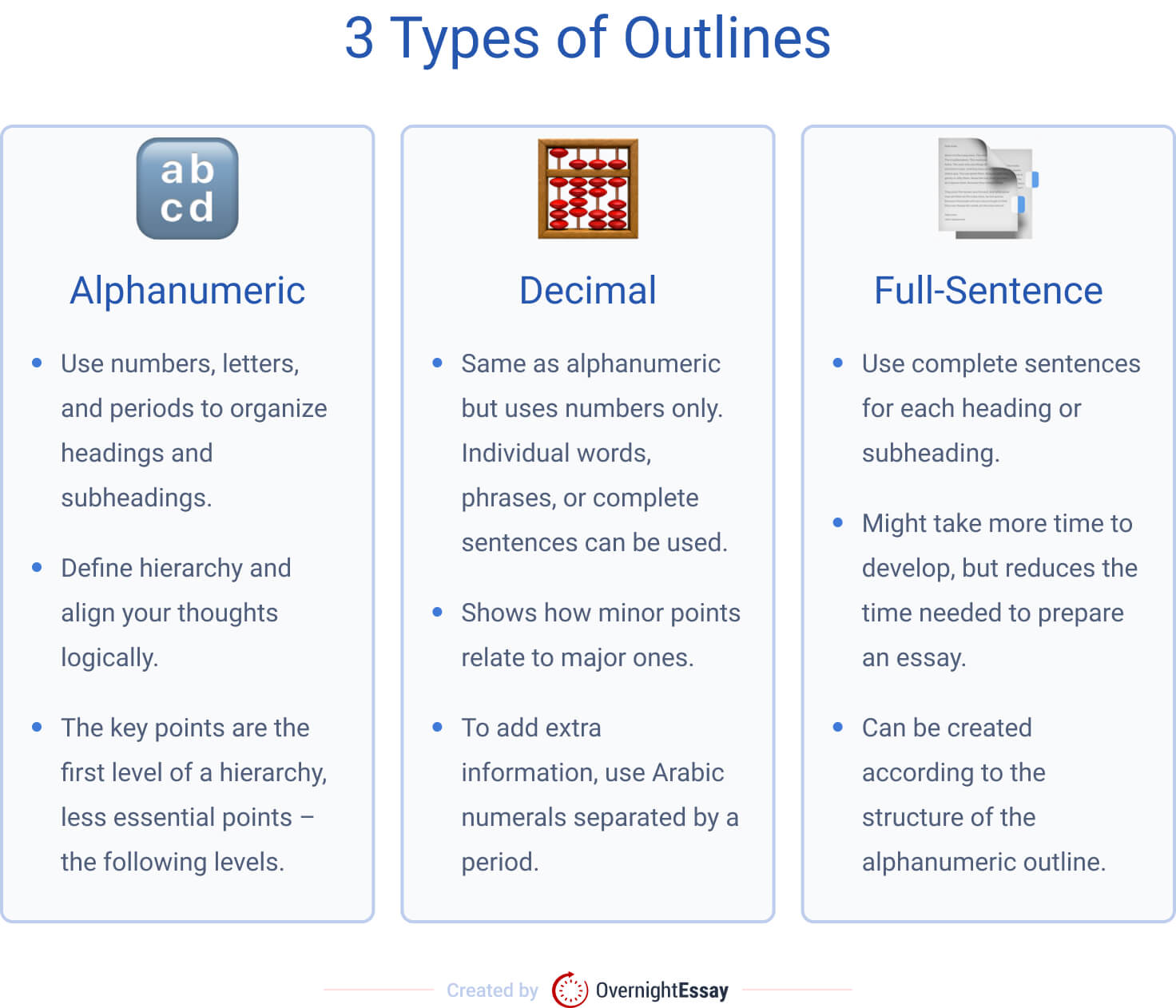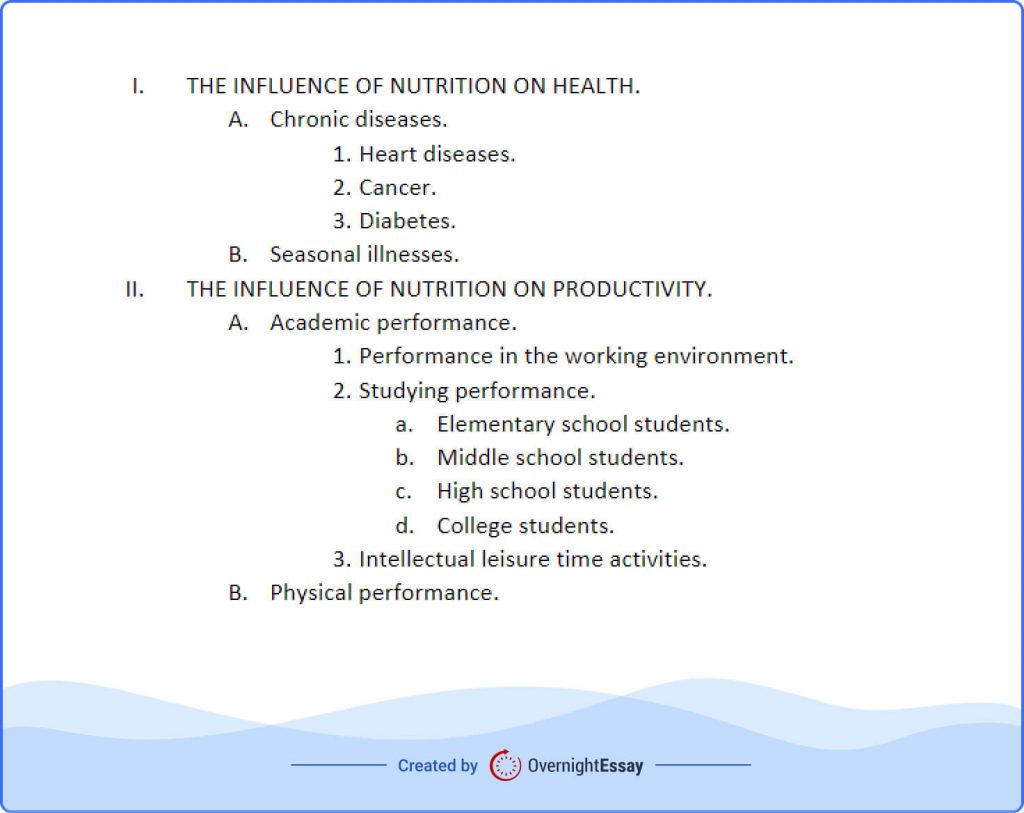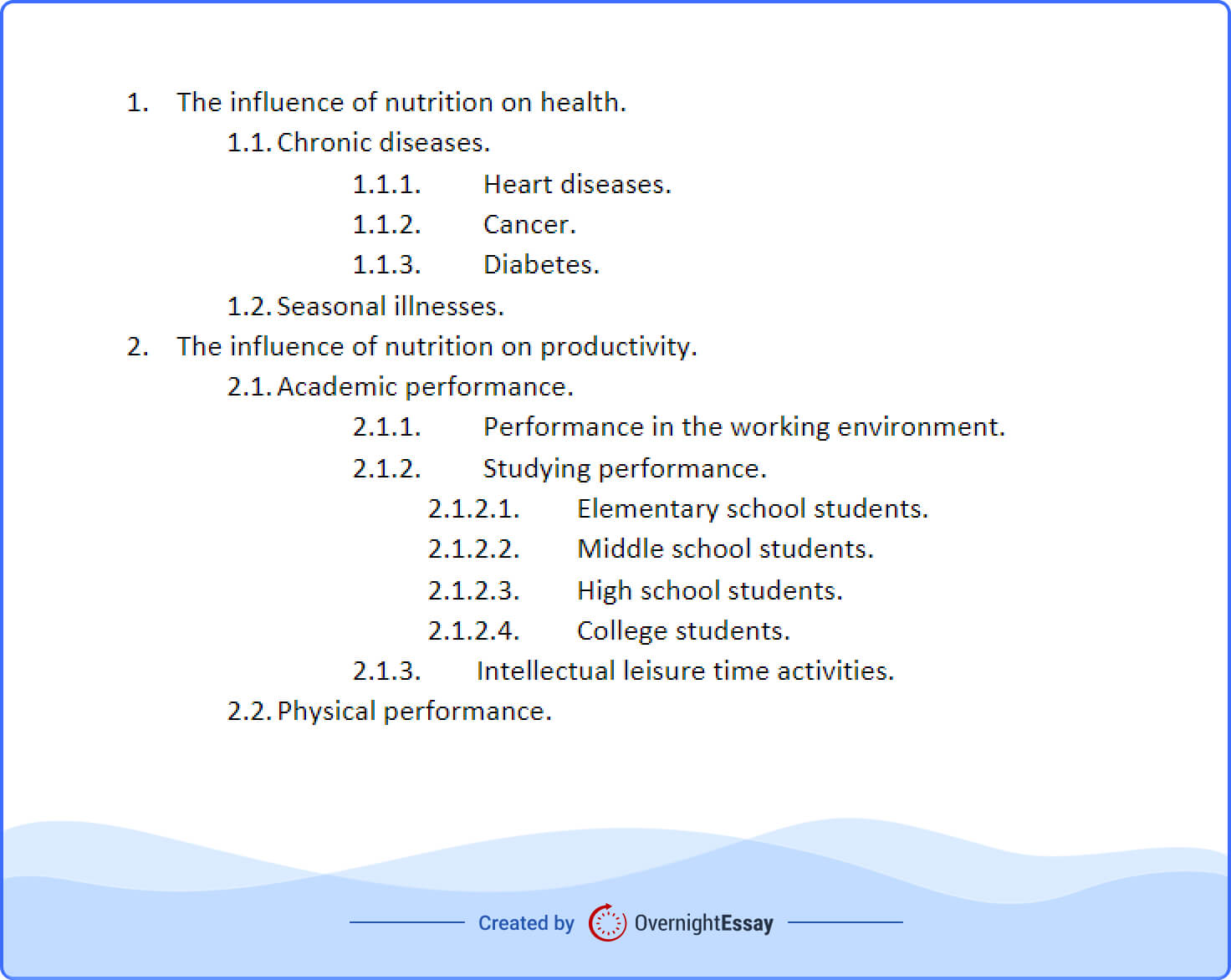What is the importance of an outline in academic writing?
Above all, an outline reduces the time you spend on writing. You can significantly facilitate your work if you know what to write in advance.
Believe it or not, we also created an outline for this article. That is why we spent only 4 hours writing and another 1.5 hours planning – 5.5 hours in total. We would have needed twice as much without an outline.
Our best experts worked hard to make this article for you. It is full tips and helpful information on creating an outline. Besides, here you’ll find decimal, full-sentence, and alphanumeric outline examples. Let’s begin!
🗂️ Importance, Rules, and Types of Outlines
An outline is a plan of your text that structures and orders its content. It is more like a basis for your writing/speech than a strict guide. An essay outline gives you a general idea and keeps you organized. At the same time, it is flexible and alterable.
We will start our discussion by defining the importance of outlining, its rules, formatting, and types.
Importance of an Outline
So, what are the benefits of an outline?
- The information is ordered logically. It helps to organize knowledge of different types and see flaws at the very beginning. If something doesn’t look appropriate, you notice it in your outline.
- A text has frameworks. It is so important both in technical writing and when you get creative. Knowing the borders helps you filter the information you find while doing research.
- You stay focused. There are so many sources that can distract you. With an outline, you know what to look for, what has to be accomplished, and what comes next.
- Time management improves. When you know how much work you need and what to expect, your time perception upgrades instantly.
- Additional motivation. Setting milestones and seeing the progress keep you interested in what you do.
Outline Rules
Of course, your approach may change depending on the type of outline you choose. We will discuss the basics in this passage.
First of all, you need to identify your research problem. Then divide it into the main categories that will become outline headings. Complete it with more specific subheadings.
When it comes to organization, we suggest chronological order (if possible). You can also arrange the information in any other logical sequence: use Roman or Arabic numerals.
Here are the rules that apply to all types of outlines:
Types of Outlines
The two main types of outlining are topic outline and sentence outline.
What are the differences?
- In a topic outline, each heading should be a single word or a phrase.
- For a sentence outline, there have to be complete sentences in headings and subheadings.
Below, we will describe the types of outlines you might use for your assignments. Choose the most convenient for your paper. If you have to hand in your outline, consult your instructor first.
An alphanumeric outline is the most common type of outline. You need to use numbers, letters, and periods to organize headings and subheadings.
Here’s an alphanumeric outline template for you.
A decimal outline, as the alphanumeric one, uses the same format for organization and hierarchy. The main difference is that you use only numbers to create it.
Have a look at a decimal outline template.
A full-sentence outline. The main requirement is to create complete sentences for each heading or subheading. The hierarchy is the same as in the alphanumeric outline. It is the most popular type of outline for traditional essays.
Check how a full-sentence outline looks like.

🔡 Alphanumeric Outline
You can use topic or sentence points in an alphanumeric outline. The main requirement is to follow outline rules defining hierarchy and aligning your thoughts logically.
At first, write down your thesis statement or topic. Decide on the main points – parts of the thesis. Make them the first level of your hierarchy, add less essential points – following levels.
How to Write an Alphanumeric Outline
An alphanumeric outline requires periods after each point. Here are the outline numbering rules:
- Use Roman numerals to list the main ideas (I., II., III., IV., …). And always capitalize words.
- Use capital letters for major details of the ideas (A., B., C., D., …).
- Use Arabic numerals to provide minor details (1., 2., 3., 4., …).
- Use lowercase letters if you need further division (a., b., c., d., …).
Check the alphanumeric outline template below.
Alphanumeric Outline Example
Let’s say it is an essay on nutrition.
We will start with a thesis.
Proper nutrition is a vital part of a lifestyle. It determines how healthy you are, influences your productivity, and changes your appearance.

🧮 Decimal Outline
This is a more convenient way to see how each minor point relates to major ones. The process of creating an outline’s headings and subheadings is similar to the alphanumeric type of outline. You can use individual words or phrases or complete sentences.
Just be consistent with what you have chosen.
How to Write a Decimal Outline
Use whole numbers for the main ideas. When you add extra information, use Arabic numerals separated by a period. The amount of digits defines the level of your outline.
Take a look at the decimal outline format:
- Use Arabic numerals for the main points (1., 2., 3., 4., …).
- Use Arabic numerals with a period to divide each category into subcategories (1.1., 1.2. or 2.1., 2.2.).
- Proceed with Arabic numerals if you need further division (1.1.1., 2.1.1., 3.1.1., etc.).
Decimal Outline Example
We will use the same essay outline that we used in the previous passage.

📑 Full-Sentence Outline
A full-sentence outline is an alphanumeric outline that uses sentences instead of phrases or words in headings and subheadings. This is a great way to structure your thoughts as your headings can be precisely the same as sentences in the text.
How to Write a Full-Sentence Outline
What is a full-sentence outline?
It is a broader approach to your writing. It might take more time to develop, but you will need less effort to prepare an essay. Create your outline according to the structure of the alphanumeric outline. Each heading and subheading is a separate completed thought.
Full-Sentence Outline Example

Well, that’s all we’ve got here.
You now know the importance of having an outline while writing.
Don’t forget to review your outline once you’ve created it. It is the best way to indicate possible mistakes. Remember that a good outline is the first step to an excellent paper.
We also recommend you to look at other students’ works. In our free essay samples base, you can find numerous papers on different topics. Maybe some of them will assist you in understanding the process of outline making. Good luck!
Thanks a lot, it was helpful.